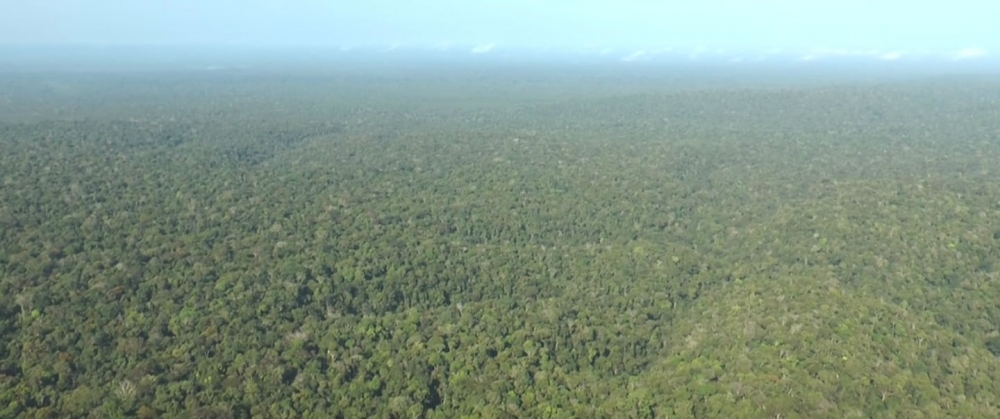


Young researchers and graduates from any country have until March 24 to apply for the event, which will be held at the University of São Paulo with FAPESP’s support (photo: Agência FAPESP)
Published on 05/13/2021
By Maria Fernanda Ziegler | Agência FAPESP – Applications are open until March 24, 2019 for the Sao Paulo School of Advanced Science on Atmospheric Aerosols, which will take place on July 22-August 2 at the University of São Paulo (USP) in São Paulo City, Brazil.
The event is supported by FAPESP through its São Paulo School of Advanced Science (SPSAS) program. One hundred places are available for graduate students and young researchers, half from Brazil and half from other countries. Participants who live outside São Paulo city will receive financial support to pay for air travel and accommodations.
The School will be hosted by the University of São Paulo’s Physics Institute (IF-USP). Its aim is to expose attendees to state-of-the-art research on the properties of atmospheric aerosols and to techniques for modeling the positive and negative effects of these suspensions of solid and liquid particles in the air on the climate, human health and ecosystems.
“We will discuss the issues relating to atmospheric aerosols in a multidisciplinary manner, interconnecting the chemical, physical and observational aspects with the impact of aerosols on climate change and on people’s lives and health,” said Henrique Barbosa, a professor at IF-USP and a principal investigator for the School.
Atmospheric pollution is one of the world’s worst environmental and health problems. It causes 11,000 deaths per year in São Paulo City alone, according to statistics from the Brazilian Panel on Climate Change (PBMC). In China, atmospheric pollution is the cause of over 1 million deaths per year, according to numbers from the State of the Global Air Report, elaborated by the Health Effects Institute (HEI).
“The main pollutant responsible for this mortality is fine particulate matter known as PM 2.5, aerosols with diameters of less than 2.5 microns. They have a significant impact on climate. Globally speaking, the levels of these aerosols are falling and so is the extent to which they mask the effects of global warming. This accelerates the rise in global temperature caused by the growing levels of greenhouse gases,” said Paulo Artaxo, who is a Full Professor at IF-USP and a member of the School’s organizing committee.
Greenhouse gases such as carbon dioxide and methane absorb terrestrial radiation, while the fine particles in pollutants reflect solar radiation back out of the atmosphere; thus, the former compounds warm the atmosphere and the latter particles cool it.
The net effect of the decreased levels of particulate matter combined with the steadily rising levels of greenhouse gases in the atmosphere is an intensification of global warming, even though, paradoxically, air pollution is improving overall.
“This School is important because we need to understand all the roles played by atmospheric aerosols,” Artaxo said. “Recent studies show they’re masking global warming more than was thought, so understanding the role of aerosols in cloud formation, air pollution, global climate change and global warming is becoming a strategic field of research. Moreover, aerosols are pertinent to the implementation of the Paris Agreement in that they’re even more involved in climate change mitigation.”
The School will also address aerosol observation techniques, physicochemistry and numerical modeling. “It’s difficult for climate models to deal with aerosols because of their complexity,” Artaxo said. “The behavior of greenhouse gases is well understood, but this is not true for aerosols, which are very short-lived in the atmosphere, lasting between a day and a week, and have variable compositions and different effects on climate. The behavior of aerosols varies considerably from one region to another, be it in the Amazon, in a City, or in African wildfires.”
Field experiments
Participants in the SPSAS on Atmospheric Aerosols will visit the research laboratories at the University of São Paulo, the Nuclear and Energy Research Institute (IPEN) and the São Paulo State Environmental Agency (CETESB).
“The School will also include a round-table discussion of public policy to control urban pollution, contrasting what happens in Latin America and Europe,” Barbosa said.
The event will also cover the main methods of aerosol observation, including satellite and laser.
“Both methods are important to ensure that the observation of aerosol behavior is complete,” Barbosa said. “One of the activities in the School will involve going to a park to measure pollution in São Paulo City using smartphones as well as more complex equipment, and applying the knowledge gained into practice for analysis and modeling.”
To enroll or for more information: https://sites.google.com/view/spsas-aerosols/spsas.
Source: https://agencia.fapesp.br/29983